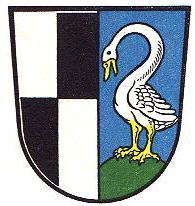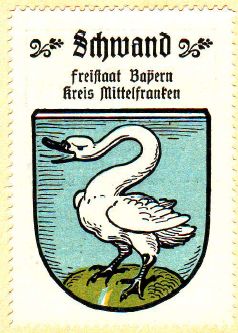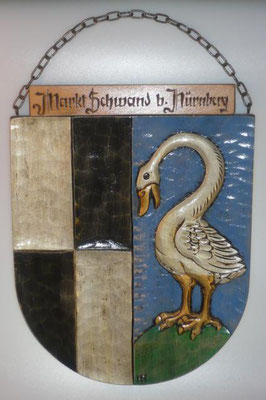Schwand: Difference between revisions
Jump to navigation
Jump to search
Knorrepoes (talk | contribs) m (Text replacement - "{{de}}" to "") |
Knorrepoes (talk | contribs) m (Text replacement - "{| class="wikitable"↵|+Official blazon↵|-↵|'''German'''↵| ↵|-↵|'''English''' ↵| {{blazon wanted}}↵|}" to "{| class="wikitable" |+Official blazon |- |'''German''' | blazon wanted |- |'''English''' | blazon wanted |}") |
||
| Line 13: | Line 13: | ||
|- | |- | ||
|'''German''' | |'''German''' | ||
| | | blazon wanted | ||
|- | |- | ||
|'''English''' | |'''English''' | ||
| | | blazon wanted | ||
|} | |} | ||
Revision as of 08:11, 6 April 2023
SCHWAND
State : Bayern
District (Kreis) : Roth (until 1973 Schwabach)
Incorporated into : 1978 Schwanstetten
| German | blazon wanted |
| English | blazon wanted |
Origin/meaning
The oldest known seal of the city dates from the early 15th century and already shows the above arms. The quartered shield is the arms of the Hohenzollern dynasty, as they owned the city at the time. The swan is a canting element (Schwan=swan). The swan appeared as a single symbol on a seal from 1652, and again in the early 19th century, when the city became a part of Bayern and thus all references to old dynasties and states became politically unacceptable. In 1933 the historical arms were officially restored and granted.
| The arms by Hupp in the Kaffee Hag albums +/- 1925 |
The arms in the Deutsches Wappenmuseum |
Literature: Stadler, 1964-1971, 8 volumes; Hupp, O: Kaffee Hag albums, 1920s


